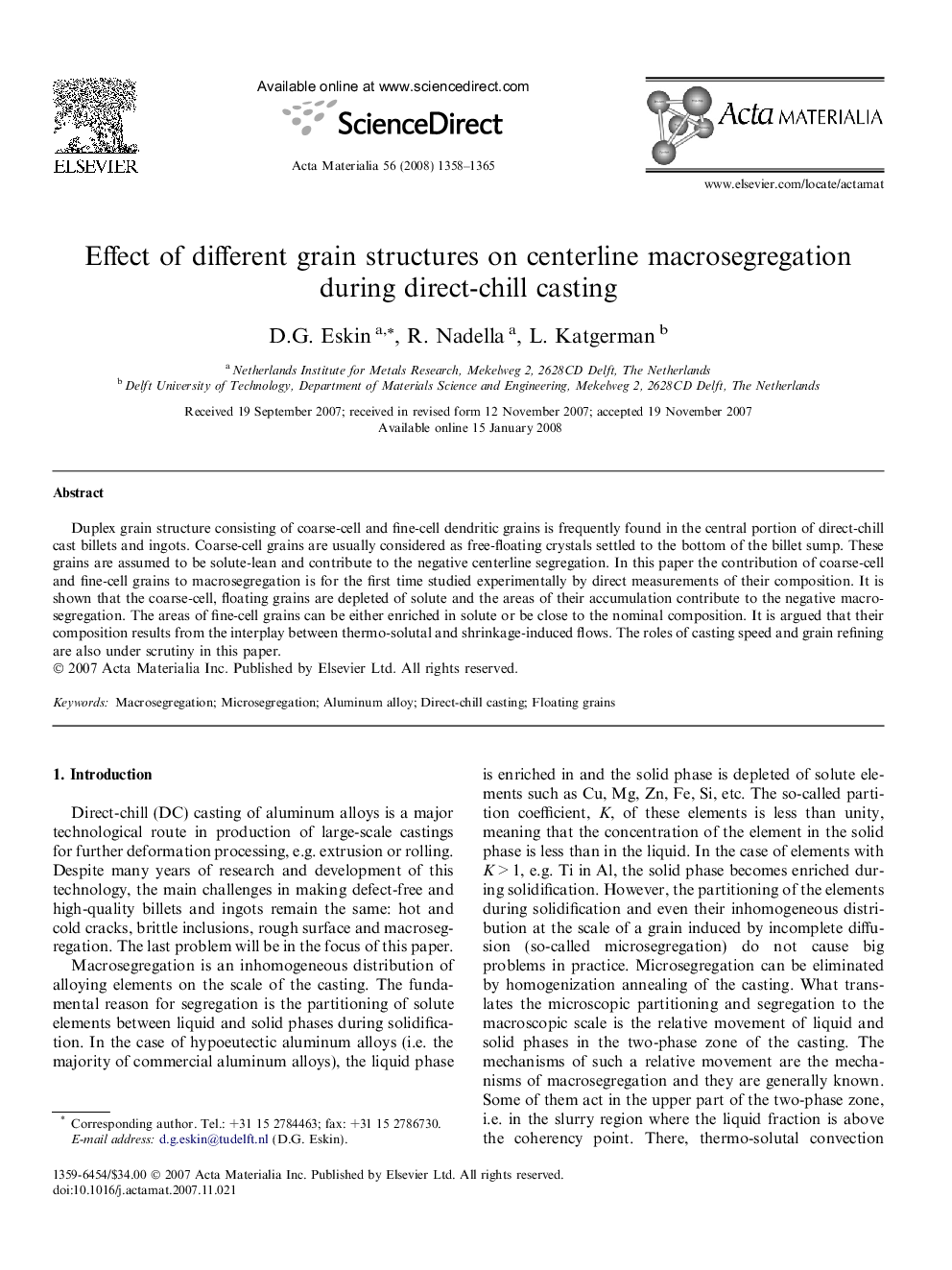| Article ID | Journal | Published Year | Pages | File Type |
|---|---|---|---|---|
| 1449180 | Acta Materialia | 2008 | 8 Pages |
Duplex grain structure consisting of coarse-cell and fine-cell dendritic grains is frequently found in the central portion of direct-chill cast billets and ingots. Coarse-cell grains are usually considered as free-floating crystals settled to the bottom of the billet sump. These grains are assumed to be solute-lean and contribute to the negative centerline segregation. In this paper the contribution of coarse-cell and fine-cell grains to macrosegregation is for the first time studied experimentally by direct measurements of their composition. It is shown that the coarse-cell, floating grains are depleted of solute and the areas of their accumulation contribute to the negative macrosegregation. The areas of fine-cell grains can be either enriched in solute or be close to the nominal composition. It is argued that their composition results from the interplay between thermo-solutal and shrinkage-induced flows. The roles of casting speed and grain refining are also under scrutiny in this paper.
